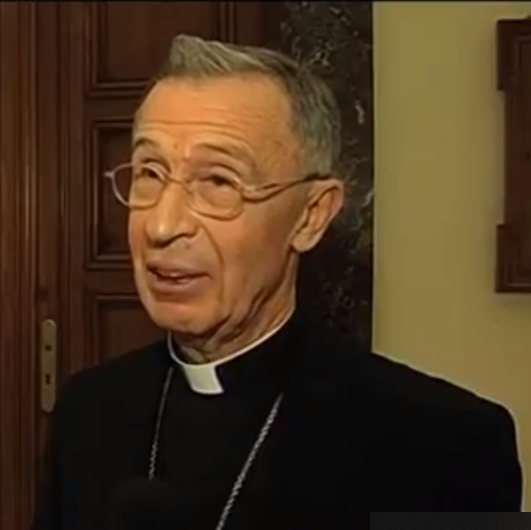|
Prefect
Prefect (from the Latin ''praefectus'', substantive adjectival form of ''praeficere'': "put in front", meaning in charge) is a magisterial title of varying definition, but essentially refers to the leader of an administrative area. A prefect's office, department, or area of control is called a prefecture, but in various post-Roman empire cases there is a prefect without a prefecture or ''vice versa''. The words "prefect" and "prefecture" are also used, more or less conventionally, to render analogous words in other languages, especially Romance languages. Ancient Rome ''Praefectus'' was the formal title of many, fairly low to high-ranking officials in ancient Rome, whose authority was not embodied in their person (as it was with elected Magistrates) but conferred by delegation from a higher authority. They did have some authority in their prefecture such as controlling prisons and in civil administration. Feudal times Especially in Medieval Latin, ''præfectus'' was used to r ... [...More Info...] [...Related Items...] OR: [Wikipedia] [Google] [Baidu] |
Prefecture
A prefecture (from the Latin ''Praefectura'') is an administrative jurisdiction traditionally governed by an appointed prefect. This can be a regional or local government subdivision in various countries, or a subdivision in certain international church structures, as well as in antiquity a Roman district. Literal prefectures Antiquity ''Prefecture'' originally refers to a self-governing body or area since the tetrarchy, when Emperor Diocletian divided the Roman Empire into four districts (each divided into dioceses), grouped under ''a Vicarius'' (a number of Roman provinces, listed under that article), although he maintained two pretorian prefectures as an administrative level above the also surviving dioceses (a few of which were split). Ecclesiastic As canon law is strongly inspired by Roman law, it is not surprising that the Catholic Church has several offices under a prefect. That term occurs also in otherwise styled offices, such as the head of a congregation or departmen ... [...More Info...] [...Related Items...] OR: [Wikipedia] [Google] [Baidu] |
French Prefect
A prefect (french: préfet, plural ''préfets'') in France is the state's representative in a department or region. Subprefects (French: ''sous-préfets'') are responsible for the subdivisions of departments, known as arrondissements. The office of a prefect is known as a prefecture and that of a subprefect as a subprefecture. Regional prefects are ''ex officio'' the departmental prefects of the regional prefecture. Prefects are tasked with upholding the law in the department they serve in, including controlling the actions of local authorities to ensure adhesion to national guidelines. They are authorised to sue local collectivities in the name of the state. Prefects are appointed by a decree of the President of France when presiding the Government's Council of Ministers, following a proposal by the Prime Minister and the Minister of the Interior. They serve at the Government's discretion and can be replaced at any meeting of the Council of Ministers. From 1982 to 1988, unde ... [...More Info...] [...Related Items...] OR: [Wikipedia] [Google] [Baidu] |
Apostolic Prefecture
An apostolic prefect or prefect apostolic is a priest who heads what is known as an apostolic prefecture, a 'pre-diocesan' missionary jurisdiction where the Catholic Church is not yet sufficiently developed to have it made a diocese. Although it usually has an (embryonal) see, it is often not called after such city but rather after a natural or administrative (in many cases colonial) geographical area. If a prefecture grows and flourishes, it may be elevated to an apostolic vicariate, headed by a titular bishop, in the hope that with time the region will generate enough Catholics and stability for its Catholic institutions, to warrant being established as a diocese. Both these stages remain missionary, hence exempt, i.e. directly subject to the Holy See (notably the Roman Congregation for the Evangelization of Peoples), normally not part of an ecclesiastical province. The full sequence of development is: independent mission, apostolic prefecture, apostolic vicariate, apostolic ... [...More Info...] [...Related Items...] OR: [Wikipedia] [Google] [Baidu] |
Prefect Apostolic
An apostolic prefect or prefect apostolic is a priest who heads what is known as an apostolic prefecture, a 'pre-diocesan' missionary jurisdiction where the Catholic Church is not yet sufficiently developed to have it made a diocese. Although it usually has an (embryonal) see, it is often not called after such city but rather after a natural or administrative (in many cases colonial) geographical area. If a prefecture grows and flourishes, it may be elevated to an apostolic vicariate, headed by a titular bishop, in the hope that with time the region will generate enough Catholics and stability for its Catholic institutions, to warrant being established as a diocese. Both these stages remain missionary, hence exempt, i.e. directly subject to the Holy See (notably the Roman Congregation for the Evangelization of Peoples), normally not part of an ecclesiastical province. The full sequence of development is: independent mission, apostolic prefecture, apostolic vicariate, apostolic ... [...More Info...] [...Related Items...] OR: [Wikipedia] [Google] [Baidu] |
Ancient Rome
In modern historiography, ancient Rome refers to Roman civilisation from the founding of the city of Rome in the 8th century BC to the collapse of the Western Roman Empire in the 5th century AD. It encompasses the Roman Kingdom (753–509 BC), Roman Republic (509–27 BC) and Roman Empire (27 BC–476 AD) until the fall of the western empire. Ancient Rome began as an Italic settlement, traditionally dated to 753 BC, beside the River Tiber in the Italian Peninsula. The settlement grew into the city and polity of Rome, and came to control its neighbours through a combination of treaties and military strength. It eventually dominated the Italian Peninsula, assimilated the Greek culture of southern Italy ( Magna Grecia) and the Etruscan culture and acquired an Empire that took in much of Europe and the lands and peoples surrounding the Mediterranean Sea. It was among the largest empires in the ancient world, with an estimated 50 to 90 million inhabitants, roughly 20% of t ... [...More Info...] [...Related Items...] OR: [Wikipedia] [Google] [Baidu] |
Roman Empire
The Roman Empire ( la, Imperium Romanum ; grc-gre, Βασιλεία τῶν Ῥωμαίων, Basileía tôn Rhōmaíōn) was the post-Republican period of ancient Rome. As a polity, it included large territorial holdings around the Mediterranean Sea in Europe, North Africa, and Western Asia, and was ruled by emperors. From the accession of Caesar Augustus as the first Roman emperor to the military anarchy of the 3rd century, it was a Principate with Italia as the metropole of its provinces and the city of Rome as its sole capital. The Empire was later ruled by multiple emperors who shared control over the Western Roman Empire and the Eastern Roman Empire. The city of Rome remained the nominal capital of both parts until AD 476 when the imperial insignia were sent to Constantinople following the capture of the Western capital of Ravenna by the Germanic barbarians. The adoption of Christianity as the state church of the Roman Empire in AD 380 and the fall of the Western ... [...More Info...] [...Related Items...] OR: [Wikipedia] [Google] [Baidu] |
Congregation (Roman Curia)
In the Roman Curia, a congregation ( lat, Sacræ Cardinalium Congregationes) is a type of department of the Curia. They are second-highest-ranking departments, ranking below the two Secretariats, and above the pontifical councils, pontifical commissions, tribunals and offices. Originally, congregations were select groups of cardinals drawn from the College of Cardinals, commissioned to take care of some field of activity that concerned the Holy See. Today, as a result of a decision of the Second Vatican Council, members include diocesan bishops from diverse parts of the world who are not cardinals. Each congregation also has a permanent staff. Each congregation is led by a Prefect, who is usually a cardinal.René Metz, ''Twentieth Century Encyclopedia of Catholicism, Vol. 80: What is Canon Law?'' (New York: Hawthorn Books, 1960), pp. 99-101 Until recently, a non-cardinal appointed to head a congregation was styled pro-prefect until made a cardinal. This practice has been abando ... [...More Info...] [...Related Items...] OR: [Wikipedia] [Google] [Baidu] |
Head Girl
Head boy and head girl are student leadership roles in schools, representing the school's entire student body. They are normally the most senior prefects in the school. The terms are commonly used in the British education system as well as in Australia and private schools throughout the Commonwealth. Some schools use alternative titles such as school captain. Head boys and head girls are usually responsible for representing the school at events, and will make public speeches. They also serve as a role model for students, and may share pupils' ideas with the school's leadership. They may also be expected to lead fellow prefects in their duties. Deputy head boys and girls may also be appointed. Some schools in the UK no longer use the titles of head boy and head girl, and now have a role of "head pupil". See also *Senior Prefect Prefect (from the Latin ''praefectus'', substantive adjectival form of ''praeficere'': "put in front", meaning in charge) is a magisterial title of ... [...More Info...] [...Related Items...] OR: [Wikipedia] [Google] [Baidu] |
Head Boy
Head boy and head girl are student leadership roles in schools, representing the school's entire student body. They are normally the most senior prefects in the school. The terms are commonly used in the British education system as well as in Australia and private schools throughout the Commonwealth. Some schools use alternative titles such as school captain. Head boys and head girls are usually responsible for representing the school at events, and will make public speeches. They also serve as a role model for students, and may share pupils' ideas with the school's leadership. They may also be expected to lead fellow prefects in their duties. Deputy head boys and girls may also be appointed. Some schools in the UK no longer use the titles of head boy and head girl, and now have a role of "head pupil". See also *Senior Prefect Prefect (from the Latin ''praefectus'', substantive adjectival form of ''praeficere'': "put in front", meaning in charge) is a magisterial title of ... [...More Info...] [...Related Items...] OR: [Wikipedia] [Google] [Baidu] |
School Corporal Punishment
School corporal punishment is the deliberate infliction of physical pain as a response to undesired behavior by students. The term corporal punishment derives from the Latin word for the "body", . In schools it may involve striking the student on the buttocks or on the palms of their hands with an implement such as a rattan cane, wooden paddle, slipper, leather strap or wooden yardstick. Less commonly, it could also include spanking or smacking the student with the open hand, especially at the kindergarten, primary school, or other more junior levels. Much of the traditional culture that surrounds corporal punishment in school, at any rate in the English-speaking world, derives largely from British practice in the 19th and 20th centuries, particularly as regards the caning of teenage boys."United Kingdom: Corporal punishme ... [...More Info...] [...Related Items...] OR: [Wikipedia] [Google] [Baidu] |
Independent School (UK)
In the United Kingdom, independent schools () are fee-charging schools, some endowed and governed by a board of governors and some in private ownership. They are independent of many of the regulations and conditions that apply to state-funded schools. For example, pupils do not have to follow the National Curriculum, although, some schools do. They are commonly described as 'private schools' although historically the term referred to a school in private ownership, in contrast to an endowed school subject to a trust or of charitable status. Many of the older independent schools catering for the 12–18 age range in England and Wales are known as public schools, seven of which were the subject of the Public Schools Act 1868. The term "public school" derived from the fact that they were then open to pupils regardless of where they lived or their religion (while in the United States and most other English-speaking countries "public school" refers to a publicly-funded state school). ... [...More Info...] [...Related Items...] OR: [Wikipedia] [Google] [Baidu] |






